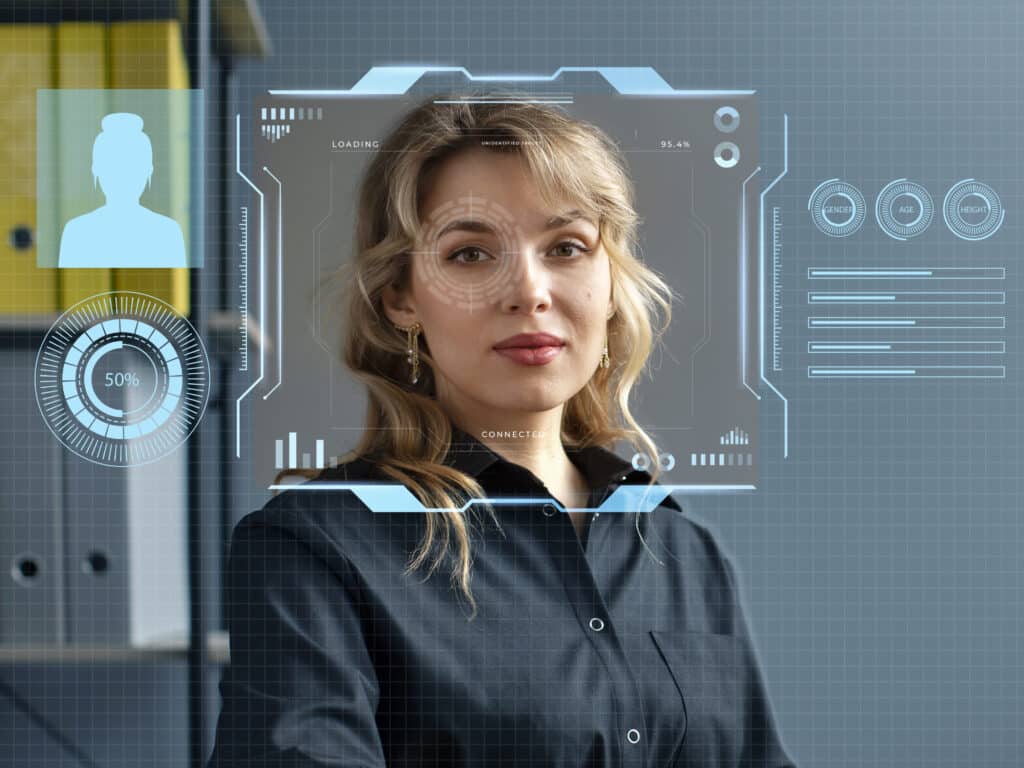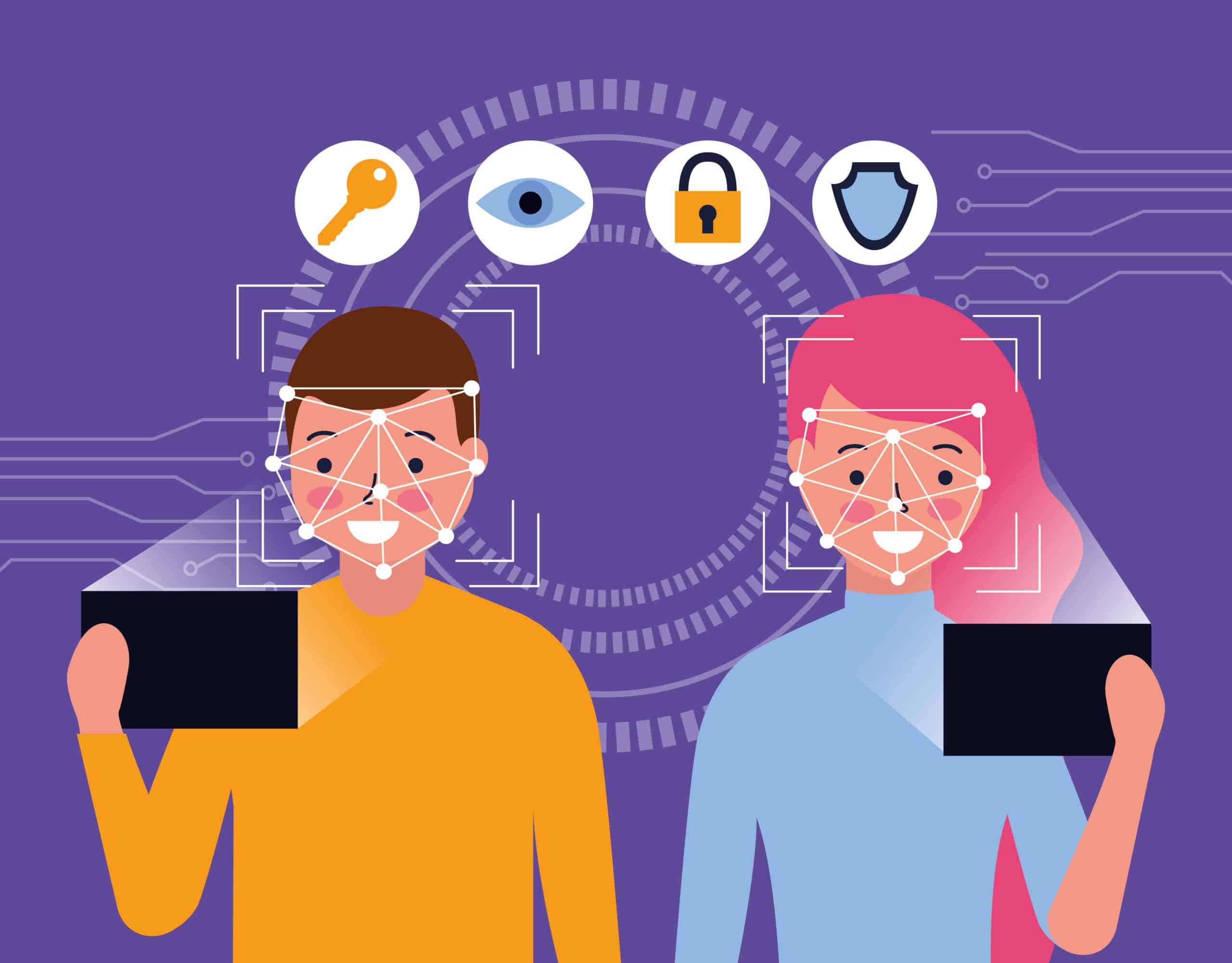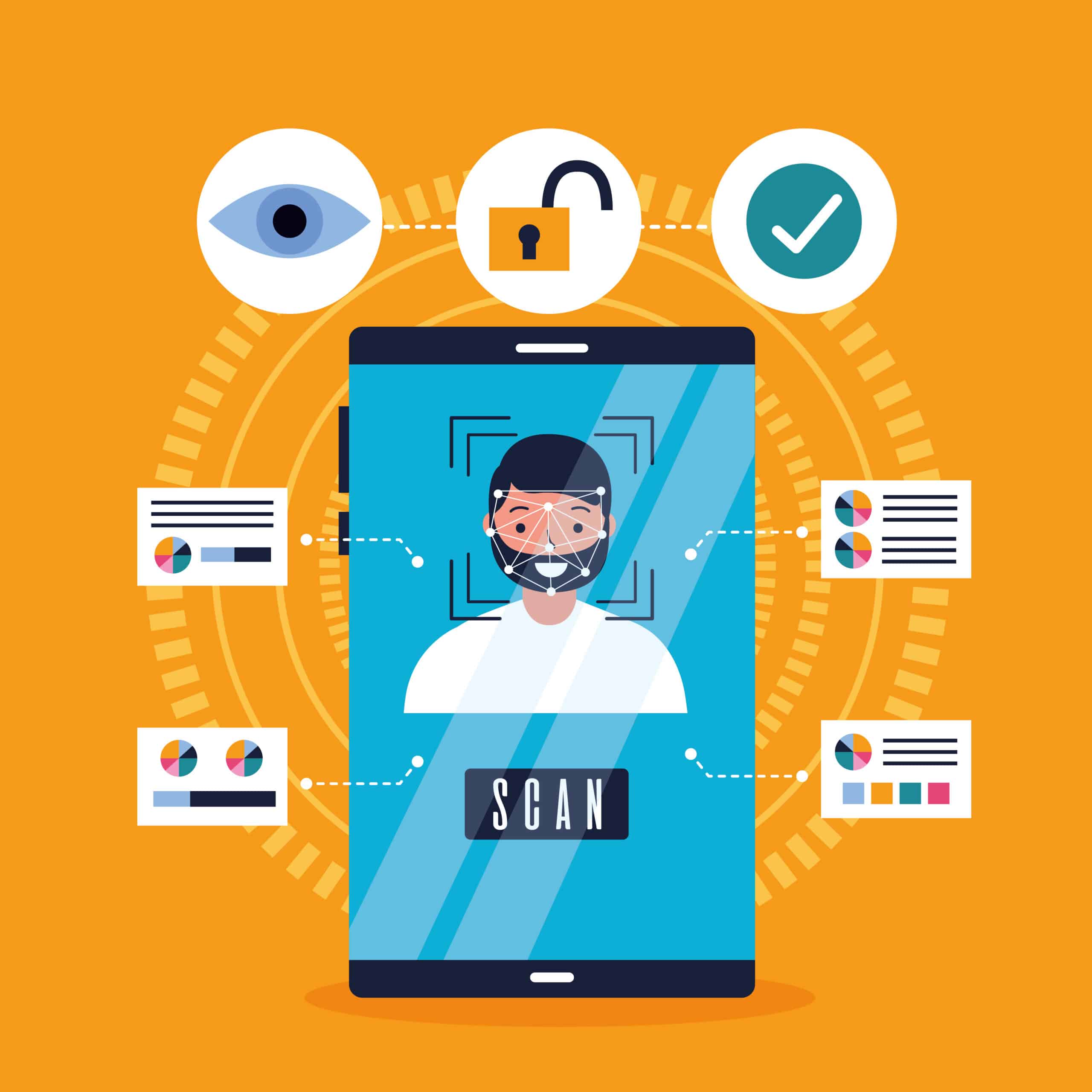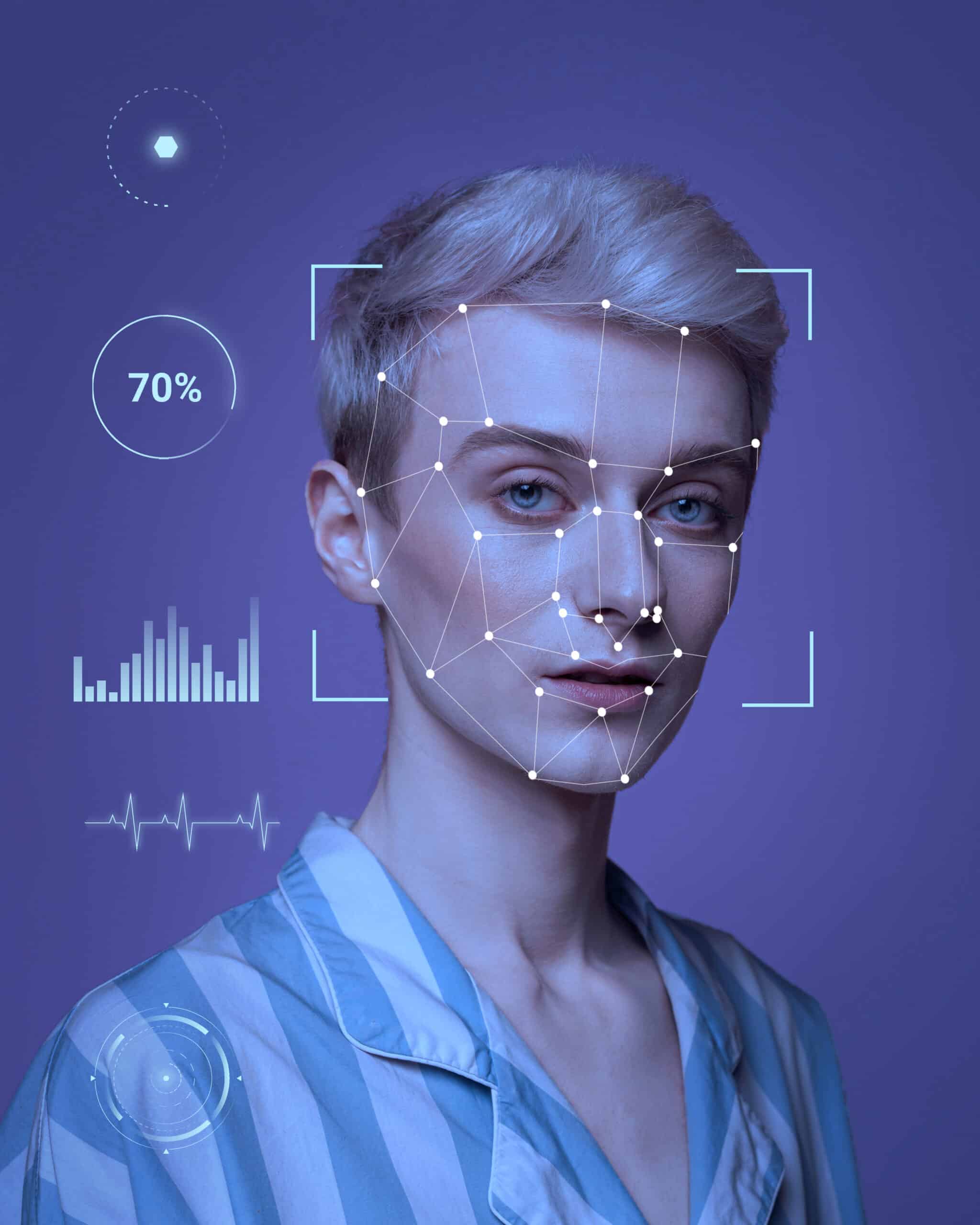Facial Recognition Identity Verification: The Future of Authentication


Facial recognition technology has revolutionized the way we verify our identities, offering a seamless and secure authentication method. This article explores the importance and benefits of facial recognition identity verification and facial recognition for future authentication, from how it works to its applications in various industries.
While it offers increased security and efficiency, concerns about privacy and biases have also arisen.
Discover how today’s innovative technology utilizes facial recognition identity verification and explore what the future holds for it.
What Is Facial Recognition Identity Verification?
Facial Recognition Identity Verification refers to the process of authenticating a person’s identity by analyzing and verifying their facial features through advanced biometric technology.
This cutting-edge technology works by capturing and comparing key facial characteristics, such as the distance between the eyes, nose, and mouth, as well as unique patterns like facial contours and skin texture. By converting these features into a mathematical algorithm, facial recognition software can accurately match an individual’s face to their stored biometric data, allowing for secure and efficient identity verification.
From unlocking smartphones to accessing secure facilities and making digital payments, facial recognition plays a crucial role in enhancing security and convenience in various applications.
How Does Facial Recognition Technology Work?
Facial Recognition Technology captures and analyzes an individual’s facial features, converting them into data points that it compares with stored templates for secure user verification.
The process begins with the capture of facial data through various methods, such as cameras or sensors, which create a digital representation of the unique facial characteristics. Complex algorithms then process this data to identify key features such as the distance between eyes, nose shape, and jawline structure.
The system compares this data with a database of pre-registered facial templates to determine a match for user authentication. Different methods like 2D or 3D facial recognition, infrared imaging, or even facial thermography may utilize for authentication.
Ensuring data security is crucial in this process, as biometric information is highly sensitive and requires strict encryption and protection measures to prevent unauthorized access or misuse.”
What Are the Applications of Facial Recognition Identity Verification?
Facial Recognition Identity Verification finds applications in diverse sectors such as security, access control, and personalized services by accurately identifying individuals based on their facial data.
This technology plays a crucial role in enhancing security measures by authenticating the identity of individuals at airports, banks, and other high-risk locations. Access control systems utilize facial recognition to grant or deny entry to authorized personnel, improving overall safety and reducing the risk of unauthorized access.
Personalized services like targeted advertising and customized user experiences utilize facial data to provide tailored recommendations and services to customers, enhancing their overall satisfaction and engagement.
Why Is Facial Recognition Identity Verification Important?
Facial Recognition Identity Verification holds paramount importance in ensuring secure authentication, protecting personal identities, and enhancing user authentication processes through advanced biometric security measures.
Implementing facial recognition technology for identity verification not only offers a seamless and efficient authentication process but also plays a crucial role in combating identity theft and fraud. By capturing unique facial features, biometric security ensures a high level of accuracy and reliability in verifying individuals’ identities.
This process significantly reduces the risks associated with traditional authentication methods like passwords or PINs, which can be easily compromised. In today’s digital world, where cyber threats loom large, integrating facial recognition identity verification systems is essential for organizations looking to fortify their security protocols and safeguard user data.
What Are the Limitations of Traditional Authentication Methods?
Traditional authentication methods face challenges in ensuring robust identity verification processes, as they often rely on easily replicable credentials and lack the sophistication of user recognition offered by facial biometric technology.
These conventional methods, such as passwords, PINs, and security questions, are susceptible to various vulnerabilities like phishing attacks, brute force hacking, and social engineering tactics. Traditional authentication methods do not offer the level of accuracy and security that facial biometric technology provides. With the increasing threat of identity theft and fraudulent activities, there is a growing need for more reliable and advanced methods of identity verification that can effectively combat these risks and enhance overall security measures.
How Can Facial Recognition Improve Authentication?
Facial Recognition technology enhances authentication by offering robust biometric security measures, supporting multi-factor authentication, and providing a seamless user authentication experience through advanced facial recognition algorithms.
By integrating biometric security features, facial recognition technology ensures a high level of accuracy in verifying a person’s identity based on unique facial characteristics. This method significantly reduces the risks associated with traditional password-based authentication, as facial recognition cannot be easily duplicated or stolen.
The integration of multi-factor authentication mechanisms, such as combining facial recognition with a secondary verification method like OTP or fingerprint scanning, adds an extra layer of security for sensitive data and transactions. Users benefit from the speed and convenience of facial recognition, as it eliminates the need to remember complex passwords and provides quick and secure access to devices and online accounts.
What Are the Benefits of Facial Recognition Identity Verification?
Facial Recognition Identity Verification offers numerous benefits, including advanced facial analysis capabilities, secure identity verification processes, and streamlined identity authentication methods for enhanced data security.
The advanced facial analysis capabilities of this technology allow for precise and accurate verification of an individual’s identity by analyzing unique facial features. It provides an added layer of security by ensuring that only authorized users are granted access.
The secure identity verification processes ensure data privacy and protection, making it difficult for unauthorized individuals to gain access. These features contribute to efficient identity authentication mechanisms that enhance overall data security and user authentication processes, offering a reliable and convenient solution for various industries.
Increased Security
One of the primary benefits of Facial Recognition Identity Verification is the heightened security it offers through the utilization of unique biometric data, face verification processes, and secure user authentication methods.
Facial recognition technology plays a crucial role in modern security systems by providing accurate and reliable user verification. By analyzing specific facial features and patterns unique to each individual, it ensures a high level of security that is difficult to fake or replicate. This technology enhances security measures in various sectors such as banking, business, and government agencies.
By incorporating facial recognition into access control systems, organizations can prevent unauthorized access and protect sensitive information from potential threats. The integration of facial recognition technology in surveillance cameras can help in real-time identification of individuals, thereby strengthening overall security measures.
Improved User Experience
Facial Recognition Identity Verification enhances the user experience by offering seamless authentication solutions, innovative identity verification methods, and a host of benefits that streamline the overall authentication process.
By utilizing facial recognition technology, users can enjoy a more intuitive and convenient authentication experience. This approach simplifies the login process, eliminating the need to remember complex passwords or carry physical tokens. The user-centric advantages of facial recognition extend to enhanced security, as this method offers a highly secure means of identity verification. Facial recognition systems are designed to adapt to individual users, ensuring a personalized and efficient authentication process that prioritizes user convenience and security.
Cost and Time Efficiency
Facial Recognition Identity Verification offers cost and time efficiency by providing scalable solutions, numerous benefits, and streamlined identity verification processes that reduce operational overhead and enhance overall efficiency.
This groundbreaking technology not only revolutionizes the way businesses handle identity verification but also significantly impacts their bottom line. By adopting facial recognition for identity verification, companies can enjoy economic advantages such as reduced labor costs, minimized fraud risks, and increased operational speed. The automation of identity authentication through facial recognition results in faster processing times, translating to improved customer experiences and increased productivity. The accuracy and reliability of facial recognition technology contribute to cost savings by reducing errors and mitigating security threats.
Reduced Fraud and Identity Theft
Facial Recognition Identity Verification aids in reducing fraud and identity theft by offering secure identity verification services, continuous development in facial recognition technology, and innovative solutions that combat fraudulent activities.
This technology plays a vital role in enhancing security measures across various industries, from financial institutions to government agencies. By accurately verifying identities through facial recognition, organizations can significantly reduce the risk of unauthorized access and fraudulent transactions. The ability of facial recognition systems to quickly and accurately confirm a person’s identity in real-time adds an extra layer of security that traditional methods often lack. As technology continues to evolve, facial recognition is becoming an indispensable tool in the fight against fraud and identity theft.”
What Are the Concerns and Controversies Surrounding Facial Recognition Identity Verification?
Facial Recognition Identity Verification is accompanied by concerns and controversies regarding accuracy, the implementation of identity verification solutions, and the safeguarding of sensitive data that underscore the need for robust security measures.
Accuracy challenges in facial recognition technology have been a topic of debate, with instances of misidentification and bias being significant issues to address. The deployment of identity verification solutions, while convenient, raises questions about individual privacy and potential misuse of personal data. Data security is paramount in the digital age, especially as cyber threats continue to evolve. These concerns have implications on the widespread adoption of facial recognition technology, as users and regulators alike weigh the benefits against the risks posed by these advanced systems.
Privacy and Data Protection
Privacy and data protection concerns in Facial Recognition Identity Verification revolve around implications for the facial recognition industry, access control mechanisms, and the importance of implementing secure facial recognition protocols to safeguard sensitive information.
Facial recognition technology has undoubtedly revolutionized various sectors, from security to marketing. The very nature of its operation raises critical questions about privacy and data security. As facial recognition systems become more integrated into daily life, the need to address these concerns becomes increasingly urgent.
Organizations must carefully navigate the balance between technological advancement and individual privacy rights. Security breaches and unauthorized access to facial data can have severe repercussions for individuals and businesses alike. Hence, it is imperative to establish robust protocols to uphold data protection standards within the domain of facial recognition technology.
Biases and Inaccuracies
Biases and inaccuracies are significant challenges in Facial Recognition Identity Verification, as they can affect access control systems, the performance of identity verification software, and the reliability of identity verification biometric data.
These issues can lead to serious implications in security and privacy measures. For instance, biases in facial recognition technology may result in certain individuals being wrongly granted access while others are unjustly denied. Inaccuracies can also compromise the overall functionality of identity verification software, leading to potential loopholes for unauthorized access.
To address these concerns, implementing strategies such as diversifying training datasets, regularly auditing algorithms, and establishing bias detection mechanisms are crucial steps towards mitigating biases and enhancing the accuracy of facial recognition systems.
Ethical Considerations
Ethical considerations surrounding Facial Recognition Identity Verification encompass the ethical use of facial recognition devices, the implementation of facial recognition technology, and the ethical features that govern the ethical deployment of facial recognition solutions.
When delving into the responsible use of facial recognition devices, it becomes evident that issues related to privacy, consent, and data security take center stage. The ethical implications of utilizing facial recognition technology extend beyond mere identification purposes, touching on broader societal impacts. From law enforcement’s use of facial recognition in surveillance to businesses employing it for customer analytics, questions arise regarding transparency, accuracy, and potential biases. Ensuring that ethical features guide the deployment of facial recognition solutions is crucial in upholding principles of fairness, accountability, and respect for individual rights.
How Is Facial Recognition Identity Verification Being Used Today?
Facial Recognition Identity Verification is currently employed across sectors such as government and law enforcement, banking and finance, and retail and e-commerce to enhance identity verification mechanisms and streamline access control processes.
- In government and law enforcement agencies, facial recognition technology aids in identifying suspects, enhancing surveillance systems, and improving public safety measures.
- Financial institutions leverage facial recognition for secure login processes, fraud detection, and ensuring banking transactions’ authenticity.
- Within the retail sector, facial recognition is utilized for personalized customer experiences, targeted marketing strategies based on facial analysis, and efficient access control for restricted areas within stores.
Government and Law Enforcement
Government and law enforcement agencies leverage Facial Recognition Identity Verification for security purposes, utilizing advanced facial recognition solutions, and identity verification technologies to enhance surveillance and identification capabilities.
This technology has become an integral part of modern security systems, allowing authorities to quickly and accurately identify individuals in various settings. The market for facial recognition technology is rapidly expanding, with advancements such as 3D facial recognition, emotion detection, and liveness detection improving the accuracy and reliability of these systems. These developments provide law enforcement with powerful tools to combat crimes and ensure public safety through enhanced monitoring and identification capabilities.
Banking and Finance
In the banking and finance sector, Facial Recognition Identity Verification is utilized for access management, implementing sophisticated identity verification mechanisms, and biometric face recognition technologies to enhance security and streamline authentication processes.
This advanced technology not only enhances security measures but also plays a crucial role in optimizing customer experience. By utilizing facial recognition for identity verification, financial institutions can offer a seamless and convenient way for customers to access their accounts and conduct transactions securely. Facial recognition systems provide an additional layer of protection against fraud and unauthorized access, ensuring the safety of sensitive financial data. The integration of facial recognition technology in financial security protocols underscores the industry’s continuous commitment to staying ahead of evolving cyber threats.
Retail and E-commerce
Retail and e-commerce sectors integrate Facial Recognition Identity Verification to enhance accuracy in customer identification, implement efficient facial recognition solutions, and streamline verification processes for frictionless customer interactions.
This technology allows businesses to provide personalized shopping experiences by analyzing customer preferences and behaviors. By utilizing facial recognition, retailers can offer targeted promotions and recommendations based on individual profiles, leading to increased customer satisfaction and loyalty. Facial recognition helps in preventing fraud by enhancing security measures through biometric authentication methods. The implementation of facial recognition technology not only simplifies the checkout process but also contributes to data-driven decision-making for inventory management and demand forecasting in the retail and e-commerce sectors.
What Is the Future of Facial Recognition Identity Verification?
The future of Facial Recognition Identity Verification holds promise with advancements in biometric face authentication, the integration of innovative facial recognition features, and the evolution of identity verification technology towards more secure and efficient systems.
- As this technology progresses, we can anticipate a shift towards more personalized and adaptive facial recognition systems. These systems are likely to leverage machine learning algorithms to continuously improve accuracy and performance, making them more robust and reliable for various applications.
- There is growing interest in enhancing facial recognition technology for enhanced user experience, such as faster processing speeds and seamless integration with other security protocols. The future landscape of facial recognition technology appears to be heading towards a more sophisticated, user-centric approach that prioritizes both security and convenience.
Advancements in Technology
The future of Facial Recognition Identity Verification will witness advancements in technology, offering enhanced benefits, secure facial recognition implementations, and cutting-edge identity verification technology for improved security measures.
These technological advancements are set to revolutionize the way we verify identities, making processes more efficient and secure. Additionally, by leveraging sophisticated algorithms and high-resolution cameras, facial recognition systems will become more accurate and reliable, reducing the risk of fraud and unauthorized access. The integration of biometric markers and machine learning will further enhance the precision of identity verification, ensuring that only authorized individuals can access sensitive information or restricted areas.
These advancements mark a significant step towards a more secure and seamless authentication process in various sectors, from banking and healthcare to transportation and government services.
Integration with Other Technologies
The integration of Facial Recognition Identity Verification with other technologies will shape the future landscape by enhancing identity authentication, following the latest facial recognition technology trends for seamless and secure verification processes.
As advancements in artificial intelligence continue to evolve, experts anticipate facial recognition technology integrating more deeply with biometric data analytics, creating a comprehensive and foolproof approach to identity verification. Also, the convergence of facial recognition with blockchain technology holds promise for ensuring immutable and tamper-proof record-keeping, heightening security levels further. The synergy between facial recognition and Internet of Things (IoT) devices is also foreseen to enable real-time identity validation, ushering in a new era of efficient and reliable authentication methods.
Potential for Universal Adoption
Facial Recognition Identity Verification holds the potential for universal adoption, driven by the development of comprehensive facial recognition databases, innovative authentication technologies, and accessible facial recognition access systems for widespread implementation.
With the increased need for secure and efficient identity verification across various sectors such as banking, travel, and law enforcement, the momentum for embracing facial recognition technology is gaining traction. The creation of extensive facial recognition databases enables organizations to streamline processes, enhance security measures, and deliver personalized services.
The advancement of authentication technologies, including biometric authentication and liveness detection, enhances the accuracy and reliability of facial recognition systems, making them more robust and adaptable to different scenarios. Additionally, the accessibility of facial recognition access systems further fosters inclusivity and convenience, paving the way for broad adoption in both public and private sectors.
Frequently Asked Questions
1. What is facial recognition identity verification and how does it shape the future of authentication?
Facial recognition identity verification is a technology that uses facial recognition algorithms to verify a person’s identity. It compares a live image of a person’s face with a stored image to determine a match. This technology is shaping the future of authentication by providing a more secure and efficient way to verify one’s identity, reducing the need for traditional methods like passwords and PINs.
2. How does facial recognition identity verification work?
Facial recognition identity verification works by capturing a live image of a person’s face using a camera or webcam. We then compare this image to a previously stored image of the person’s face, usually taken during the enrollment process. The system uses algorithms to analyze and match facial features, such as the distance between the eyes and the shape of the jawline, to determine a match.
3. Is facial recognition identity verification accurate and reliable?
Yes, researchers have proven facial recognition identity verification to be highly accurate and reliable. The technology has advanced significantly in recent years, with some systems boasting a 99% accuracy rate. However, it is important to note that the accuracy of the system depends on various factors, such as lighting conditions and the quality of the images being compared.
4. What are the benefits of using facial recognition identity verification?
Facial recognition identity verification offers numerous benefits, including improved security, convenience, and cost-effectiveness. It eliminates the need for physical identity documents or traditional authentication methods, making it more convenient for users. It also reduces the risk of fraud and identity theft, making it a more secure option.
5. Are there any concerns or drawbacks to using facial recognition identity verification?
While facial recognition identity verification has many benefits, there are also concerns surrounding privacy and potential biases in the technology. Some people may feel uncomfortable with their facial features being stored and used for verification. Additionally, there have also been concerns about the technology being biased against certain demographics, such as people of color or those with disabilities.
6. Where is facial recognition identity verification being used?
Facial recognition identity verification is being used in various industries, including banking, healthcare, and government agencies. It is also becoming increasingly popular for online and mobile authentication, with many smartphones now incorporating facial recognition technology as a security feature. As the technology continues to advance, we can expect to see it being used in even more applications in the future.



